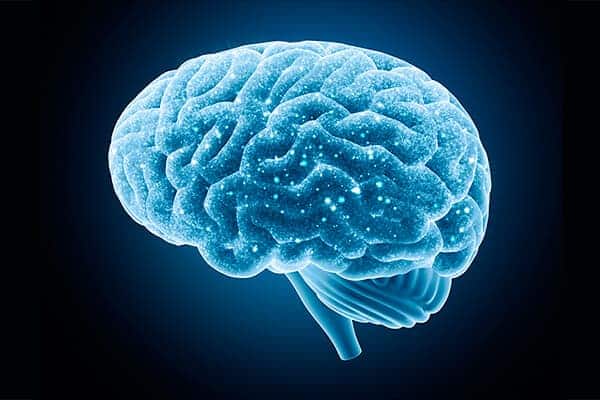New research led by Northeastern University suggests that Alzheimer’s disease may not progress like falling dominoes, as conventional wisdom holds, with one molecular event sparking the formation of plaques throughout the brain. Instead, it may progress like a fireworks display, with a unique flare launching each plaque, one by one.
The study, headed by Lee Makowski, professor and chair of the Department of Bioengineering, was published Thursday in the journal Scientific Reports.
“I believe the findings will provide us with a new way of thinking about the molecular basis for Alzheimer’s disease progression,” says Makowski. “Once you do that, you can start asking the right questions about how to prevent it.”
Distinguishing between the fibrils may provide critical insights for developing therapies to slow, halt, or reverse the neurodegeneration associated with Alzheimer’s disease.
—Lee Makowski
More than 5 million Americans are living with Alzheimer’s disease, according to the Alzheimer’s Association. It is the sixth leading cause of death in the U.S., the association reports, killing more people than breast and prostate cancers combined.
Yet much about its cause and the mechanisms driving its progression remain unknown. Alzheimer’s disease typically starts with the death of brain cells, or “neurons,” in one part of the brain and then, over time, slowly spreads to other regions. Amyloid fibrils—thin rigid strands of protein aggregates—accumulate in these areas of neuronal death, packing together to form dense plaques.
“Just as there are different strains of a virus, there appear to be different strains of fibrils,” explains Makowski. “Remarkably, the different strains have the same chemical makeup but different three-dimensional structures.”
Insight into therapies
It was the structures that Makowski’s team zeroed in on.
In collaboration with researchers from Massachusetts General Hospital and Argonne National Laboratory’s Advanced Photon Source, Makowski and former research associate Jiliang Liu, PhD’15, scanned slices of brain tissue retrieved at autopsy from four people with Alzheimer’s and one with no history of dementia using an X-ray beam just five microns across. They then built images of the fibrous structures within the plaques from the thousands of diffraction patterns they collected.
Because fibrils self-propagate, researchers have speculated that all fibrils in a given brain are of the same strain and hence have the same structure. That led to the assumption that a single molecular event initiated their accumulation into plaques and the subsequent cascading progression of the disease.
“Our data wasn’t consistent with that,” says Makowski. “We found that fibrils with distinctly different structures can accumulate in the same brain, even in plaques quite close to one another. This strongly suggests that there is not one event that initiates fibril formation throughout the brain but many. Our research indicates that it is the condition under which fibrils form that slowly propagates through the brain and triggers a distinct initiation event for each plaque.”
Think of a cold front traveling south from Massachusetts to Virginia. It’s raining up and down the East Coast. When conditions are right in Massachusetts—that is, when the temperature drops to 32 degrees—the rain turns to snow (the initiation event). Virginia, however, doesn’t get any snow until a week later when its temperature drops to the freezing point. As in the brain, the conditions drive the event.
“The findings are important because they change the way we think about disease progression,” says Makowski. “It gives us a new point of view from which to develop hypotheses about the conditions that lead to the formation of fibrils and plaques.”
The researchers also showed that the structure of the fibrils may vary based on a person’s clinical history. For example, the fibrils of one woman who had exhibited no signs of dementia prior to death were distinctly different from those found in the others, who had Alzheimer’s disease.
“This may mean that some strains of fibrils are associated with disease whereas others are not,” says Makowski. “Distinguishing between them may provide critical insights for developing therapies to slow, halt, or reverse the neurodegeneration associated with Alzheimer’s disease.”


